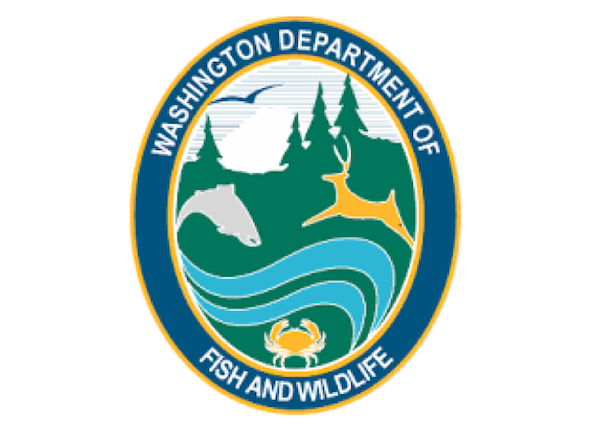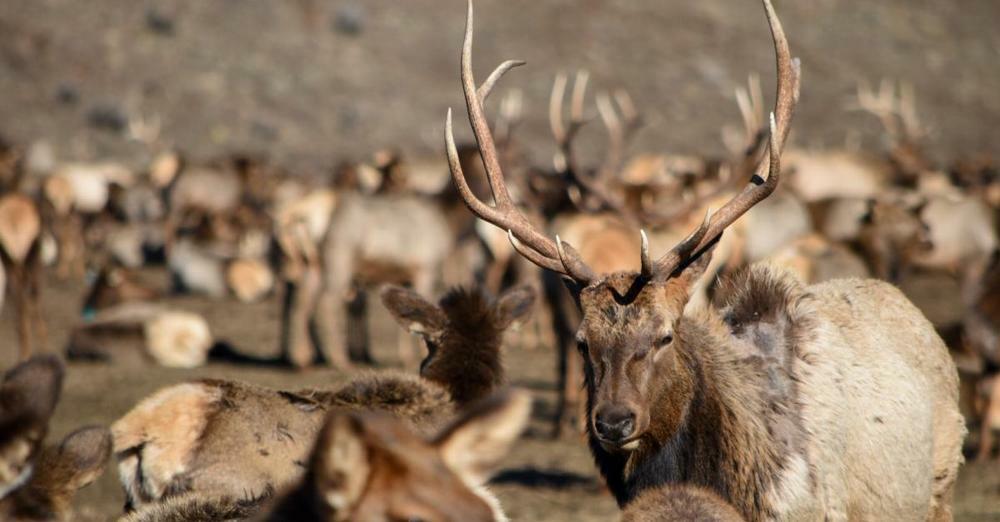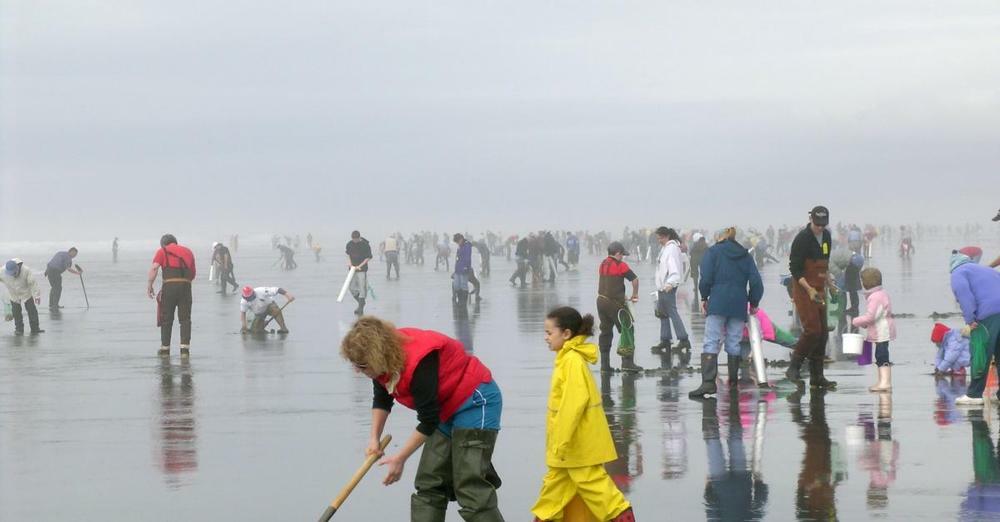Last chance to dig 20 razor clams as next round of digs confirmed for Washington coast; 26 tentative digs also scheduled for early 2022

by WA Department of Fish & Wildlife Staff
12-9-2021
Website
Limit returns to 15 razor clams beginning Dec. 30
OLYMPIA – Shellfish managers with the Washington Department of Fish and Wildlife (WDFW) today announced 26 tentatively scheduled razor clam digs in January and February, and confirmed that the latest round of December digs can proceed as planned beginning next week.
“These late-winter digs should continue what’s been a very successful razor clam season so far,” said Dan Ayres, coastal shellfish manager with WDFW. “There were a lot of great digging days this fall, and we’re looking forward to a productive spring season as well.”
Beginning with the final 2021 digs on Dec. 30, the daily limit of razor clams will return to the usual 15. The limit increased to 20 clams throughout the fall digs, but Ayres said that the 15-clam limit should help prevent exceeding quotas set before the season.
“Returning to a 15-clam limit on Dec. 30 should help ensure we have sufficient clams remaining to be able to offer digs during the morning spring tides that many people prefer,” Ayres said.
Managers confirmed the following December digs can proceed as scheduled, after marine toxin results from the Washington Department of Health earlier this week showed razor clams were safe to eat:
- Dec. 15, Wednesday, 4:28 P.M.; +0.6 feet; Long Beach, Twin Harbors, Mocrocks
- Dec. 16, Thursday, 5:07 P.M.; +0.1 feet; Long Beach, Twin Harbors, Copalis
- Dec. 17, Friday, 5:43 P.M.; -0.2 feet; Long Beach, Twin Harbors, Mocrocks
- Dec. 18, Saturday, 6:18 P.M.; -0.3 feet; Long Beach, Twin Harbors, Copalis
- Dec. 19, Sunday, 6:52 P.M.; -0.4 feet; Long Beach, Twin Harbors, Mocrocks
- Dec. 20, Monday, 7:27 P.M.; -0.3 feet; Long Beach, Twin Harbors, Copalis
- Dec. 21, Tuesday, 8:02 P.M.; -0.2 feet; Long Beach, Twin Harbors, Mocrocks
- Dec. 22, Wednesday, 8:38 P.M.; -0.1 feet; Long Beach, Twin Harbors, Copalis
- Dec. 23, Thursday, 9:16 P.M.; +0.2 feet; Long Beach, Twin Harbors, Mocrocks
WDFW previously announced the following tentative 2021 dig dates, when the limit will return to 15 razor clams. All dates below are tentative pending final marine toxin testing, which usually occurs about a week or less prior to each set of openings:
- Dec. 30, Thursday, 3:49 P.M.; -0.1 feet; Long Beach, Twin Harbors, Mocrocks
- Dec. 31, Friday, 4:42 P.M.; -0.9 feet; Long Beach, Twin Harbors, Copalis
The following tentative 2022 dig dates were also announced today, along with low tides and beaches:
- Jan. 1, Saturday, 5:32 P.M.; -1.5 feet; Long Beach, Twin Harbors, Mocrocks
- Jan. 2, Sunday, 6:21 P.M.; -1.8 feet; Long Beach, Twin Harbors, Copalis
- Jan. 3, Monday, 7:08 P.M.; -1.9 feet; Long Beach, Twin Harbors, Mocrocks
- Jan. 4, Tuesday, 7:54 PM -1.6 feet; Long Beach, Twin Harbors, Copalis
- Jan. 5, Wednesday, 8:40 P.M.; -1.1 feet; Long Beach
- Jan. 14, Friday, 4:43 P.M.; +0.4 feet; Long Beach
- Jan. 15, Saturday, 5:22 P.M.; +0.1 feet; Long Beach, Twin Harbors, Copalis
- Jan. 16, Sunday, 5:59 P.M.; -0.2 feet; Long Beach, Twin Harbors, Mocrocks
- Jan. 17, Monday, 6:34 P.M.; -0.3 feet; Long Beach, Twin Harbors, Copalis
- Jan. 18, Tuesday, 7:08 P.M.; -0.4 feet; Long Beach, Twin Harbors
- Jan. 19, Wednesday, 7:41 P.M.; -0.4 feet; Long Beach, Copalis
- Jan. 20, Thursday, 8:14 P.M.; -0.2 feet; Long Beach
- Jan. 29, Saturday, 4:30 P.M.; -0.7 feet; Long Beach, Twin Harbors, Mocrocks
- Jan. 30, Sunday, 5:21 P.M.; -1.2 feet; Long Beach, Copalis
- Jan. 31, Monday, 6:08 P.M.; -1.5 feet; Long Beach
- Feb. 1, Tuesday, 6:52 P.M.; -1.5 feet; Long Beach, Twin Harbors, Copalis
- Feb. 2, Wednesday, 7:34 P.M.; -1.2 feet; Long Beach, Twin Harbors, Mocrocks
- Feb. 3, Thursday, 8:13 P.M.; -0.7 feet; Copalis
- Feb. 14, Monday, 5:35 P.M.; 0.0 feet; Long Beach
- Feb. 15, Tuesday, 6:09 P.M.; -0.3 feet; Long Beach, Mocrocks
- Feb. 16, Wednesday, 6:42 P.M.; -0.4 feet; Long Beach, Copalis
- Feb. 17, Thursday, 7:14 P.M.; -0.3 feet; Long Beach, Twin Harbors
- Feb. 18, Friday, 7:45 P.M.; -0.1 feet; Long Beach, Twin Harbors, Copalis
- Feb. 26, Saturday, 3:18 P.M.; 0.0 feet; Long Beach, Twin Harbors, Copalis
- Feb. 27, Sunday, 4:16 P.M.; -0.4 feet; Long Beach, Mocrocks
- Feb. 28, Monday, 5:06 P.M.; -0.8 feet; Long Beach
Not all beaches are open for every dig, so diggers are encouraged to make sure their intended destination is open before heading out. Diggers should also continue to respect coastal communities and residents by following local and state health guidelines.
Most successful digging occurs between one and two hours before the listed time of low tide. No digging is allowed before noon during digs when low tide occurs in the afternoon or evening.
Details on these and future digs can be found at wdfw.wa.gov/fishing/shellfishing-regulations/razor-clams.
All diggers age 15 or older must have an applicable fishing license to harvest razor clams on any beach.
Licenses, ranging from a three-day razor clam license to an annual combination fishing license or a Fish Washington license, are available from WDFW’s licensing website at fishhunt.dfw.wa.gov/login, and from hundreds of license vendors around the state. WDFW recommends buying your license before visiting coastal beach communities for this razor clam season.
To learn more about razor clam abundance, population densities at various beaches, and how seasons are set, visit wdfw.wa.gov/fishing/shellfishing-regulations/razor-clams#management.
The Washington Department of Fish and Wildlife works to preserve, protect, and perpetuate fish, wildlife and ecosystems while providing sustainable fish, wildlife, and recreational and commercial opportunities.
More Reports
WA Department of Fish & Wildlife Reports
for Wednesday, December 8th, 2021
• Coastal rivers and tributaries fishing rules update
• News WDFW to close sections of wildlife areas in Kittitas and Yakima counties to protect wintering elk starting Dec. 15 WDFW to c

11-24-2021
OLYMPIA – Razor clam digging continues in December, as shellfish managers with the Washington Department of Fish and Wildlife (WDFW)...... Read More
